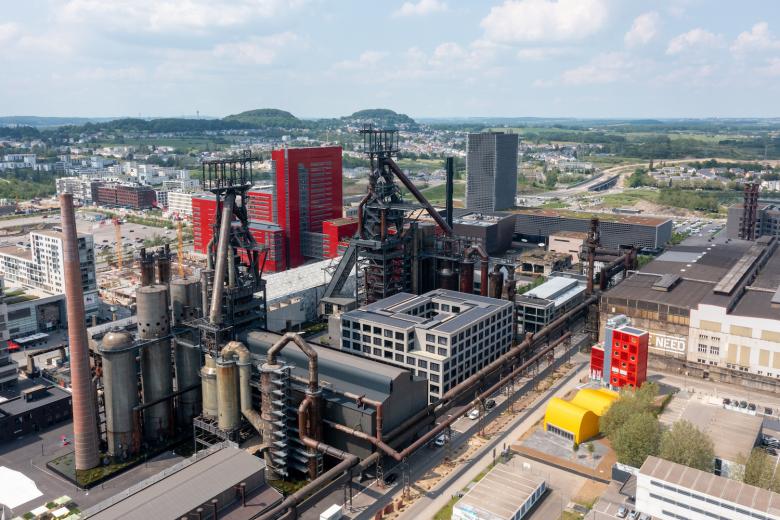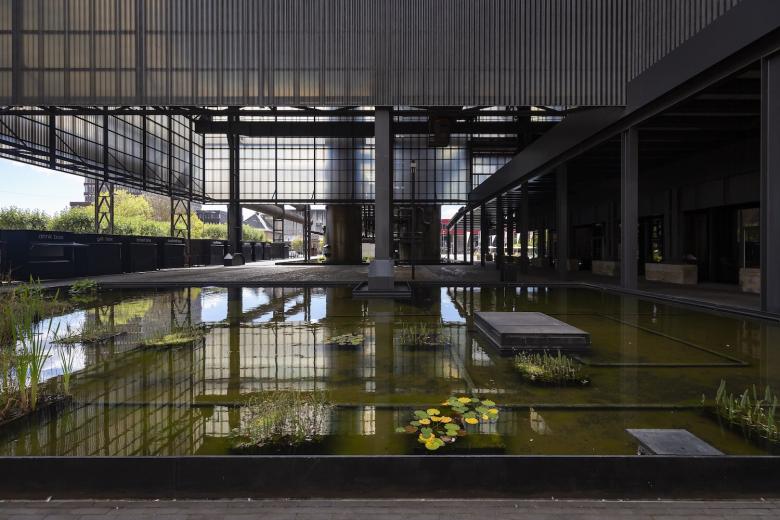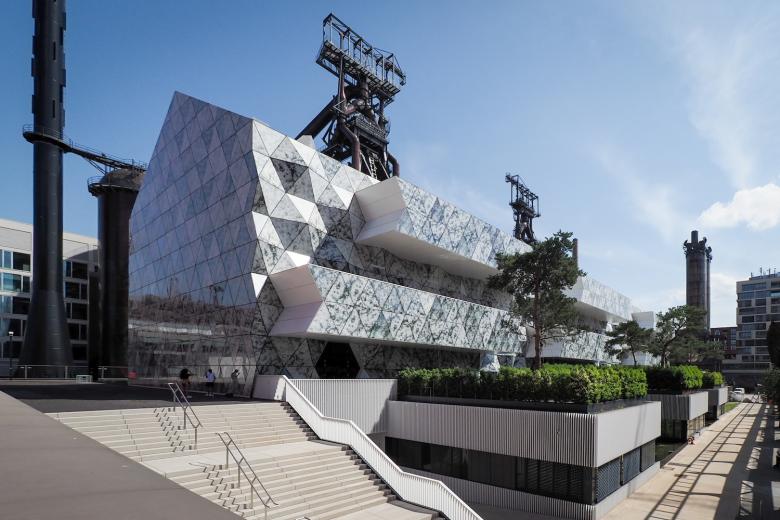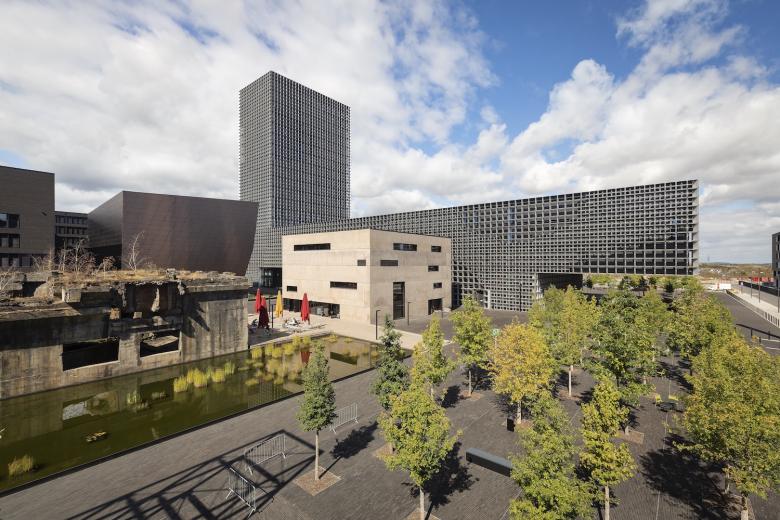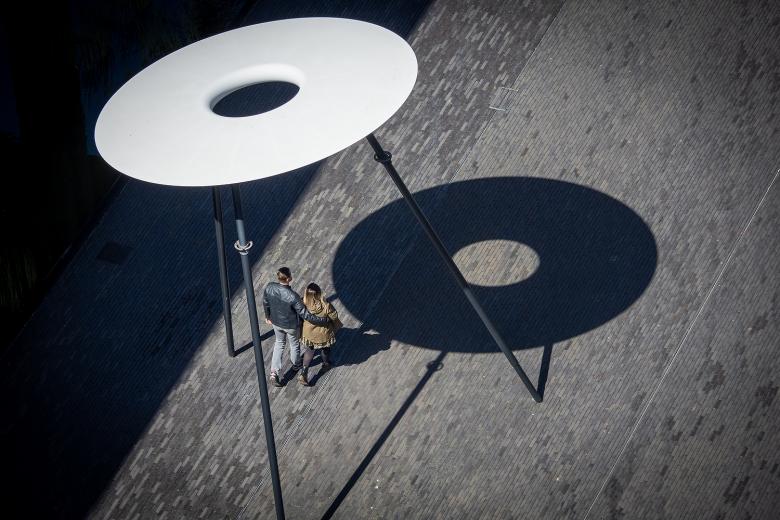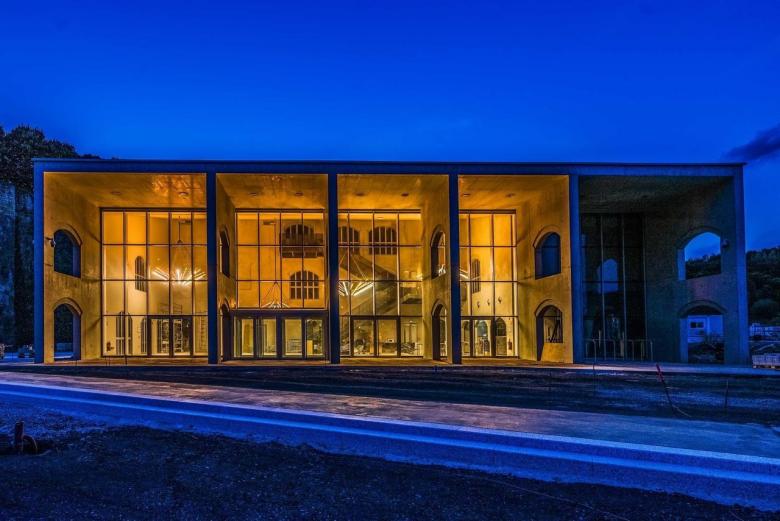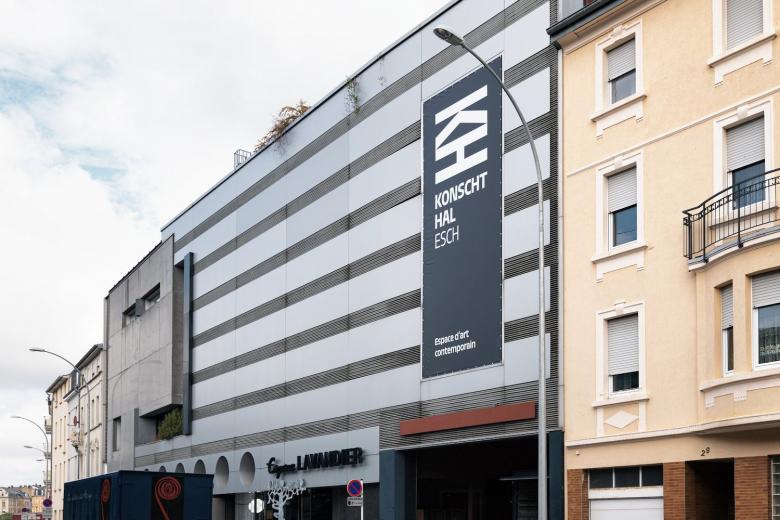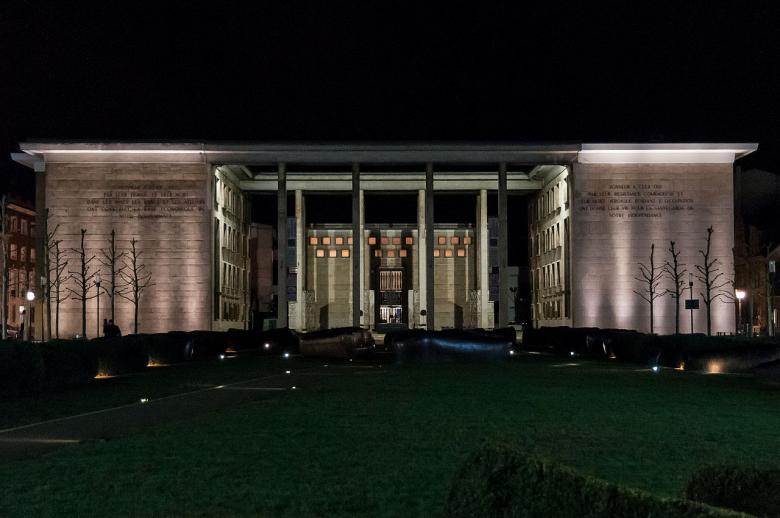From Industry to Knowledge
Luxembourg’s second city, Esch-sur-Alzette (or Esch, for short, population 36,000), is preparing for its role as the European Capital of Culture next year. Ulf Meyer visited Esch to take in different parts of the city and highlight some of the additions being made in the run up to next year’s festivities.
Turning abandoned industrial sites into lively urban districts is a task many cities are confronted with, especially the coal- and iron ore-mining areas of Central Europe. Esch, the second largest city in Luxembourg, has a history of heavy industry. Esch’s skyline is dominated by the giant blast furnaces located in the Belval area. Recently, tall bank and university buildings have popped up around the black steel dinosaurs, indicating the dawn of a new era for the industrial town.
Belval
Twenty years ago, Dutch architect Jo Coenen started Belval’s remarkable transition from industrial wasteland to new “City of Sciences” with bold urban design moves in a competition win for the transformation of the fallow industrial site into a district with 25,000 jobs and 8,000 residential units. The anchor of his concept was keeping the two 90-meter-tall blast furnaces and grouping the new urban quarters around them. Five years after Coenen’s 2001 competition win, French architect Claude Vasconi added bright red bank towers next to the old furnaces, immediately giving Belval a new silhouette that could not be overlooked.
Perhaps more important than the buildings are the interventions of landscape architect Michel Desvigne. With a limited palette of elements, dark homogenous surfaces provide a neutral, calm background for the site. Depth is created through reflective water basins that create a luminous contrast with the heavy, dark buildings. Desvigne proposed a “steel courtyard” that acts as a window into the past and is a new public space at the lower level of the industrial plant. The “Terrace of the Blast Furnaces,” as Desvigne calls it, takes its name from the blast furnaces and steel yards that were kept as rudiments of industrial history in the new context. The public space serves the campus of the University of Luxembourg, the new university that the wealthy Grand Duchy of Luxembourg founded and funded, plus the adjacent Rockhal arena.
One architectural highlight after another has followed since. The university’s Maison du Livre, designed by Valentiny hvp Architects around the ore silo at the foot of blast furnace B, is a clever combination of old and new. The existing steel structure has been cleaned, reinforced and repainted, preserving traces of its past while a new facade envelops it. The facade panels for the reading areas are flat, while the hexagonal elements projecting from the west create natural, indirect and soft lighting for working. Only two of the six pyramid facets are transparent, with the balance opaque. The Maison du Savoir next door is a landmark designed by Austria’s Baumschlager Eberle Architekten for the university. An auditorium is housed in a bar-shaped volume cantilevered above the plaza. Combined with a rigid metal grid for its facade — its double layer creating stunning moiré effects on its elevations — the building makes a striking reference to the site’s industrial past.
But again, the design of the horizontal surfaces, more than those of the vertical elevations, has given Belval its post-industrial image. The Square Mile district was laid out for services, retail and residences, with a main pedestrian axis connecting the Stahlhof with the park. Park Belval is a new green center, laid out as a “Fôret Sauvage” that carries the origins of the area through pioneer plantings. As usual with conversions, the costs of cleaning up contaminated areas were considerable. The St. Esprit Plateau is used as the central landfill, reshaped and sealed. It has resulted in a new landscape element that compensates for the density of the built-up areas. Even the blast furnace has become more than a sight: it is freely accessible up to a height of 40 meters, from where people can enjoy views of the new district.
The transformation of Belval is an excellent starting point for Esch to use its role as 2022 European Capital City of Culture in a sustainable way. The festival program may be high profile, but it also might just be a flash in the pan. However, some of the more lasting, architecturally interesting projects are to be found outside of Belval — and even outside the country, in neighboring France.
Three Noteworthy Projects
The most remarkable cultural project for 2022 is nearing completion across the border in Micheville, Villerupf, France. The L’Arche cultural center, designed by K ARCHITECTURES from Paris, contains a giant theater with 700 seats, a smaller movie hall, as well as music and recording studios. Until the 1960s, the town was thriving with the steel industry, which brought many immigrants from Italy. When the factory closed in 1974, Micheville became the unofficial capital of Italian Cinema in France because of a local film festival focusing on the culture of cinema that came with the town’s transplanted residents.
The new cultural center is built on the site of the former steel furnace. Unlike in Belval, only a thick and tall stone wall was left as a reminder of the site’s industrial past. The gray concrete building has arched openings with a faux brick-like arch pattern on the concrete surfaces. The overall shape of L’Arche’s slightly tilted, terraced roofscape is supposed to be reminiscent of the famous Casa Malaparte on the island of Capri, an icon of Italian rationalist architecture. The lower, entrance side of the L’Arche opens up with a series of arcades towards the entrance plaza and a park at the banks of the Alzette river. After the opening of the new center, Micheville will have to prove that a large cultural center alone can invigorate a blue-collar town in decline.
Back across the border in Esch, a new cultural attraction opened its doors in October and has so far received very favorable reviews. In stark contrast to the top-down approach in France, here a former designer-furniture showroom that went out of business was purchased by the city for little money and is now serving as a Konschthal Esch – a Space for Contemporary Art.
Literally around the corner from Esch’s new art center is the National Museum of Resistance, which was designed in 1956 by Laurent Schmit and faces Brillplatz. For the occasion of the European Capital of Culture, the museum is getting a major facelift and extension by the famous Luxembourg architect Jim Clemes. While the monumental architecture, with its tall colonnade facing the plaza on the east, does not quite fit into the small-scale streetscape of Esch, it will not be altered. Mainly it is the contents that will be updated. For instance, although it was intended to be a memorial against Nazi terror — a memory is still worth preserving — the curators will add more exhibits focused on contemporary threats to democracy. Nevertheless, Clemes has designed a breakthrough on the south along Rue de l'Alzette with a broken brick facade; the addition, used for administration, workshop rooms, exhibitions and a group entrance, more than triples the museum’s available space. Starting in February, when the museum reopens, tourists will test both the ephemeral and the permanent creations that the title European Capital of Culture will bring to Luxembourg’s second city.
